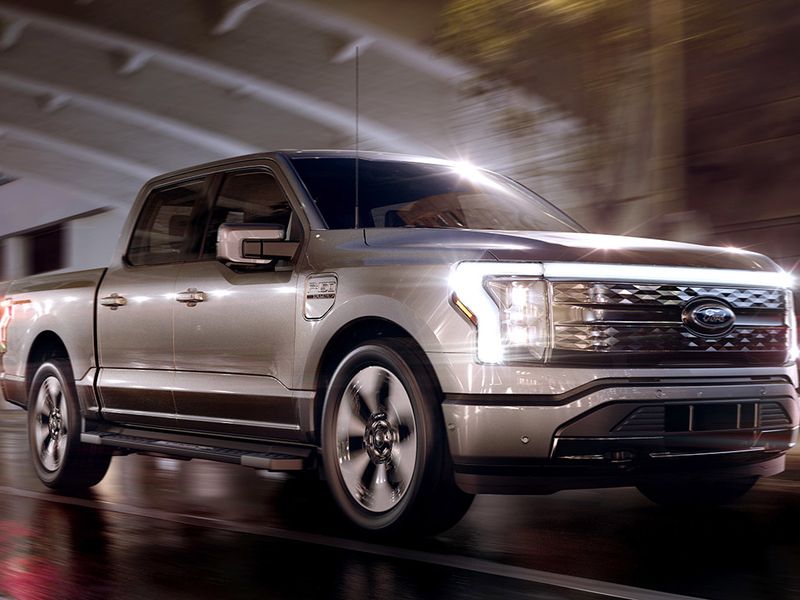
Ford’s flashy introduction of its F-150 Lightning and the events surrounding it displayed a mastery of showmanship, ginning up excitement for the first all-electric edition of the nation’s top-selling model line.
From President Joe Biden’s glowing three-word review — “That sucker’s quick!” — to the carnival-like atmosphere of the automaker’s nighttime reveal at its headquarters, the F-150 Lightning got a huge jolt of attention right out of the gate. That was appropriate, given the King Ranch-size expectations that the Lightning will carry both for Ford and for electric vehicles in general when the battery-powered pickup arrives in showrooms. It’s with this in mind that caution is warranted by automotive marketers as they hype the capabilities of their new EVs.
Unlike most electric models, the F-150 Lightning will be expected to do much more than just ferry passengers and the detritus of everyday living. Because it wears the F-150 badge, buyers will expect the Lightning to be first and foremost a pickup, capable of hauling and towing and working alongside its owner to get whatever job it’s doing done — just as its petrol-powered brethren have for generations.
We have no doubt about the veracity of Ford’s claims for the F-150 Lightning — that it’s starting range will be about 230 miles on a full charge and that it is capable of towing up to 10,000 pounds.
But of course, it can’t haul that much that far. As anyone who’s pulled a trailer knows, there’s a significant fuel-economy penalty incurred in towing, regardless of whether that fuel is gasoline, diesel or electrons. While the nation has a fully built infrastructure for refueling with gasoline, that’s not yet the case with electric charging.
The serious business users Ford is targeting will rightfully want to know the practical capabilities of electric work trucks in order to accurately calculate their total cost of ownership.
Giving those customers unrealistic expectations is bad for business. With all of the challenges around electric vehicle adoption, dealers need to play their role as consumer advocates and demand clarity from manufacturers to ensure high customer satisfaction.
It’s incumbent on marketers and dealers to level with consumers about the physical limitations and trade-offs with EVs. Failing to do so could set them back a generation.

